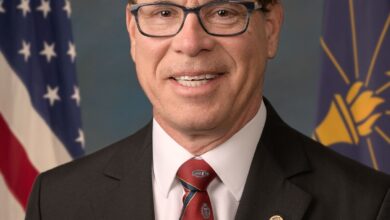
College Enrollment Shifts From China To India
Influx of students from India drives US college enrollment up, but the number of students from China is down
India is up in college enrollment. China is down. Very few U.S. students studied abroad during the first year of the pandemic.
Those three points, in a nutshell, represent key findings from recent data released jointly on Nov. 14, 2022, by the U.S. Department of State and the Institute of International Education.
The “Open Doors Report on International Educational Exchange” is published yearly at the start of International Education Week. It provides detailed insights regarding study abroad and international students.
Rise in virtual study abroad
This year’s report shows a 91% decline in the total number of U.S. students who studied abroad during the 2020-2021 academic year. The pandemic also led colleges to develop more online global learning opportunities. In fact, 62% of colleges offered virtual internships with multinational companies, collaborative online coursework with students abroad and other experiences.
While virtual learning cannot replace the immersive experiences of studying abroad, it can expand access to other cultures and international perspectives for greater numbers of students. For this reason, technology is likely to continue to serve as a key part of international education programming.
Number of international students grows in the US
While the COVID-19 pandemic contributed to a 45.6% decline in new international students in 2020, the latest data, covering the 2021-2022 academic year, indicates that the total number of international students in the U.S. – 948,519 – has started to recover. This can be seen in a 3.8% increase over the 914,095 international students in the U.S. in 2020. Still, the number is well below the nearly 1.1 million international students reported in 2018. Much of the recent growth is driven by an increase in the number of new international students – 261,961 – which is up 80% over the 145,528 from 2020 but still 2.14% below the 267,712 from 2019.
Students from China and India comprise more than half – 52% – of all international students. That isn’t anything new, but what is noteworthy about college enrollment is that during the 2021-2022 academic year, Chinese student enrollment fell 9% and the number of Indian students increased by 19% over the prior year. This has big implications for international diversity at U.S. colleges. This is because Chinese students tend to enroll in a range of majors, while most Indian students – 66.4% – study in just a handful of programs: engineering, math and computer science.

Souring relations with China
Over the past decade, U.S. college enrollment for Chinese students increased more than in any other country. While the onset of the global pandemic effectively halted travel between China and the U.S. due to flight restrictions and widespread lockdowns, the decline in Chinese enrollment began years earlier.
Contributing factors include Chinese parents’ concerns for their children’s safety in the U.S., development of China’s own world-class universities and souring relations between the two countries, which has spilled over into the higher education sector. In fact, in 2019, China’s Ministry of Education warned students against studying in the U.S. due to the risk of encountering visa problems.
College and careers draw many out of India
China and India each have around 1.4 billion people, but by 2023 the United Nations predicts that India will overtake China as the world’s most populous country. This continued growth will further strain India’s higher education system, leading to more students pursuing advanced degrees abroad. At the same time, poor job prospects at home are driving many Indian students to pursue academic and career pathways that lead away from India. This is especially true in high-paying, high-growth fields like computers and information technology.
Other contributing factors to the increase in college enrollment from India includes a change in tone on the part of the U.S. government. The Biden administration is working to reestablish the U.S. as a welcoming destination for international students by enacting reversals of Trump-era immigration policies. Those policies caused uncertainty and fear among international students. The Biden administration has also prioritized the processing of student visas in India.
Looking forward
The Institute of International Education also released data from a Fall 2022 Snapshot Survey, which includes responses from more than 600 U.S. colleges and universities. The findings point to a 7% increase in new international students enrolled.
While the U.S. Department of State continues to prioritize student visas in India by adding more staff and streamlining the process, Chinese visa approvals are trending lower than in years past, although it’s difficult to pinpoint a single factor as to why. A further decline in Chinese students presents major challenges for the U.S., its colleges and the communities in which they are based. This is because in addition to the US$32 billion that international students collectively contribute to the U.S. economy, the friendships and cultural insights that they develop while studying at local colleges serve to promote U.S. foreign policy in the form of positive relations between the U.S. and other countries.
As the number of U.S. college students is projected to decline, college recruiters will increase outreach to international students to fill empty seats. However, whether international student recruitment alone can fill those empty seats is yet to be seen.
David L. Di Maria, Associate Vice Provost for International Education, University of Maryland, Baltimore County
This article is republished from The Conversation under a Creative Commons license. Read the original article.






